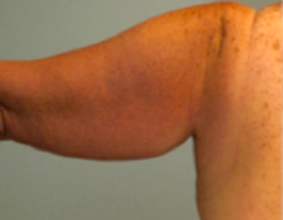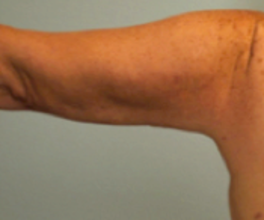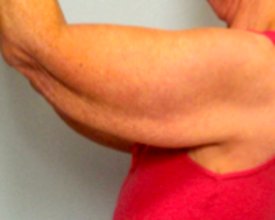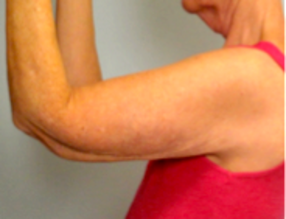TISSUE LIFTING BY RADIO FREQUENCY ASSISTED BODYTITE

If the degree of relaxation of the tissues is not very high you may want to consider using modern BodyTite equipment that has revolutionized numerous surgeries often avoiding visible scars. This is a new technology RFAL (Radio Frequency Assisted Liposuction) that emits a bipolar radiofrequency through the use of a tiny cannula introduced below the skin and performs simultaneously a lipolysis electronically controlled by a computer with effect coagulation and tissue retraction. Depending on the area to be treated there are different types of cannula used for the different parts of the body. The retraction of the skin is immediate and lasts six months after giving origin to a real lifting without the risk of burns or distortions of the tissues. As a secondary thermal effect is the production of collagen fibers in the 6 months following further increasing the result. This type of surgical treatment may be associated with liposuction in all those patients who have localized fat deposits at the same time to moderate sagging skin. In this case, the liposuction ensures an optimal result without the danger of having post-operative skin redundant to remove surgically and the presence of permanent scars consequently. The operation is performed under local anesthesia with light sedation that allows the return to social life without the need for any immediate hospitalization. After the treatment is always applied a dressing with compression sleeve that must be kept at the site treated for at least 3-4 weeks. The function of the compression sleeve has the purpose to avoid the formation of hematomas and at the same time, re-uniting tissues reshaped uniformly.
What kind of blemish can be treated with the RFAL?
They can usually treat all patients who have moderate but not excessive sagging skin of all body areas where you would normally place a surgical resection as:
- Lifting Arms for ptosis skin of the inner surface of the arms
- Addominoplasty with moderate ptosis of abdominal skin
- Mastopexy or moderate gynecomastia
- Thigh-Lifting for ptosis of the thighs skin especially of the inner surface.
- Cervical Lifting for ptosis moderate skin of the neck
Anesthesia and hospitalization
Small-scale lipoapirazione with RFAL can be performed in the office of your plastic surgeon under local anesthesia. You can leave the clinic immediately after surgery. A particular technique used by us involves the injection of anesthetics in the area to be treated, reducing the need for general anesthesia even in severe treatments. Big surgeries require general anesthesia. Liposuction of hips and legs can also be performed with spinal anesthesia. The preoperative analysis, as well as the visit by the anesthetist, are required. The recovery in social life is almost immediate.
How to prepare for intervention
Inform your surgeon if you suffer from allergies or other chronic diseases. If you are bruising easily or bleed excessively in the case of small wounds, will need to have tests to rule out problems with your blood clotting. Painkillers like aspirin are contraindicated during the two weeks before surgery because their active ingredient interferes with blood clotting and may cause excessive bleeding. It’s even better to avoid alcohol and sleeping pills.
Get a flexible compression garments suitable for the part to operate on and bring it with you on the day of surgery.
How is the surgery performed
Before surgery, the plastic surgeon decides how to reshape the areas to streamline, drawing with a marker isometric lines around the body parts to be operated on. A small incision about 0.3 mm long is performed under local anesthesia in a very hidden point like natural folds. A solution of anesthetic and vasoconstrictors is injected in the part to be treated to reduce bleeding. After about 10 minutes a thin cannula is introduced under the skin, connected to a suction machine and the special equipment for the emission of radio frequency waves. With precise movements back and forward, the surgeon shapes the body, breaking the structure of adipose tissue alterated and sucking the fat in excess. Aspiration of the amount of fat to be removed at this stage can last from 20 minutes up to 2 hours or more. The fat aspirated from one side is kept and weighed with precision to obtain at the end a symmetric result. At the end of this phase, we proceed to suture the small access incisions. Subsequently, the part is compressed slightly by an elastic garments or a bandage, to avoid that in the empty spaces of the tissue fluid can accumulate and cause scarring or knots, or other irregularities.
What happens after surgery
Immediately after surgery, you have to expect slight pains and small bruisings. These symptoms subside within a few days or weeks. Swelling is normal after all the surgeries and can last from 6 weeks to 6 months in extreme cases. The result is evaluated not before 6-9 months after surgery. The sutures are removed after one week. The scars fade over time and become almost invisible.
Possible risks and complications
The risks and complications of treatment with radiofrequency Bodytite are rare and grow with the amount of fat aspirated. After a liposuction, there may be paraesthesia in the areas affected by the surgery. The risk of bruising or scarring plaque is present if you do not hold the elastic garments or bandages in a consistent manner, or even if there is a personal predisposition. Removal of a significant amount of adipose tissue may cause excessive loss of body fluids or blood. In this case, it makes up with an infusion of physiological fluid or a blood transfusion. Have been reported in very rare cases of embolism, these cases require medical intensive treatment. Nevertheless, the correlation between liposuction and embolism has not been proved and we do mention it just for precise information. The surgery is not recommended in patients with diabetes, vascular heart or lungs problems, and if the area to be treated had recently a surgery.
Precautions after surgery
It’s important to keep elastic garments day and night for the first 6 weeks after surgery, to avoid possible complications. Normally you feel in full physical form almost immediately after the operation. The recovery time, however, is very personal and depends on the entity of suction. It’s better to reduce the sports training in the early weeks following surgery. Also, avoid massage during the early healing phase Cold showers instead stimulate the circulation and can speed up the healing process.

Before intervention

After intervention

Before intervention

